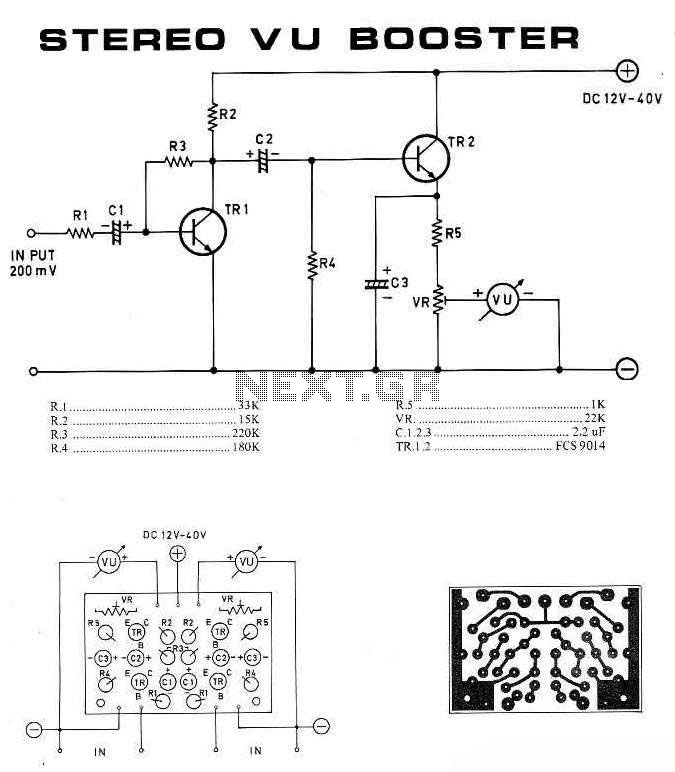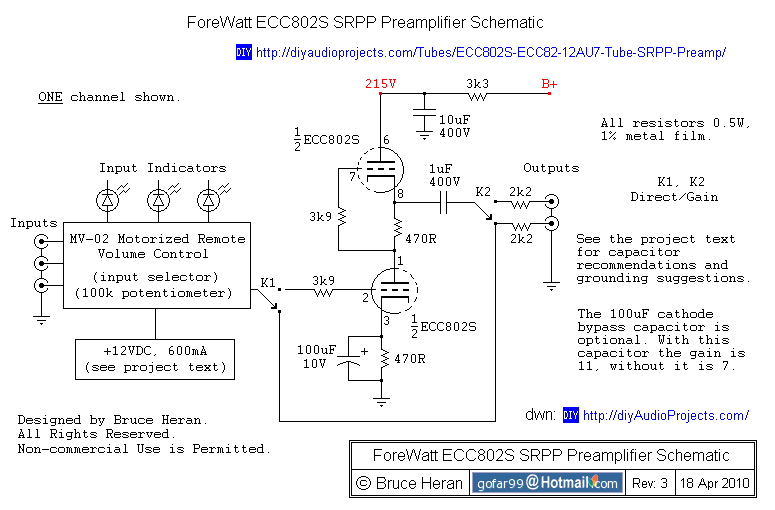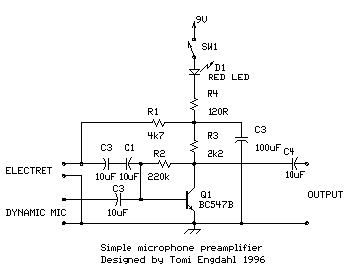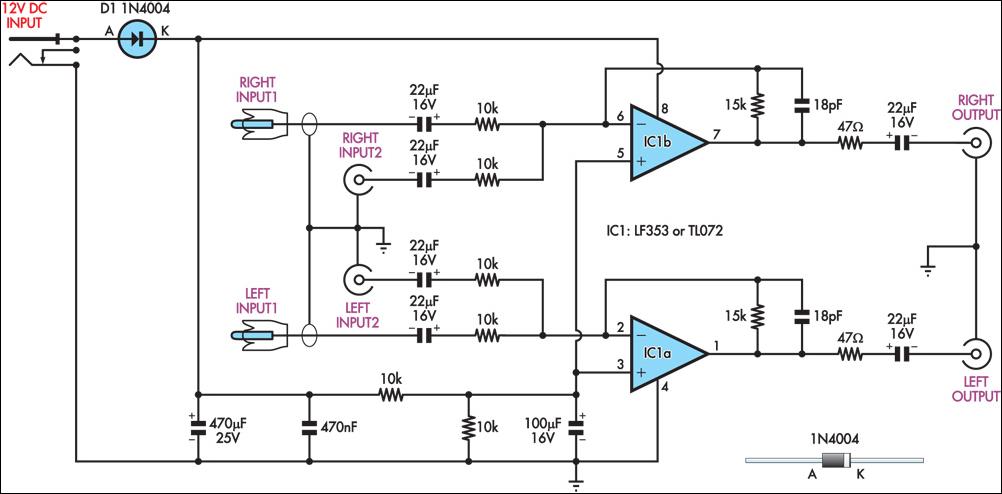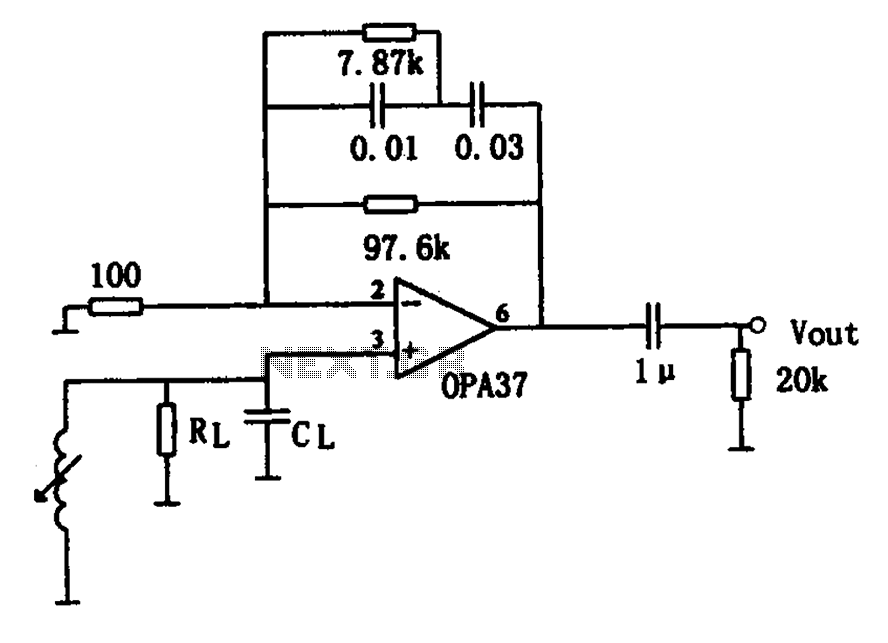
TDA1524 IC Stereo Preamplifier
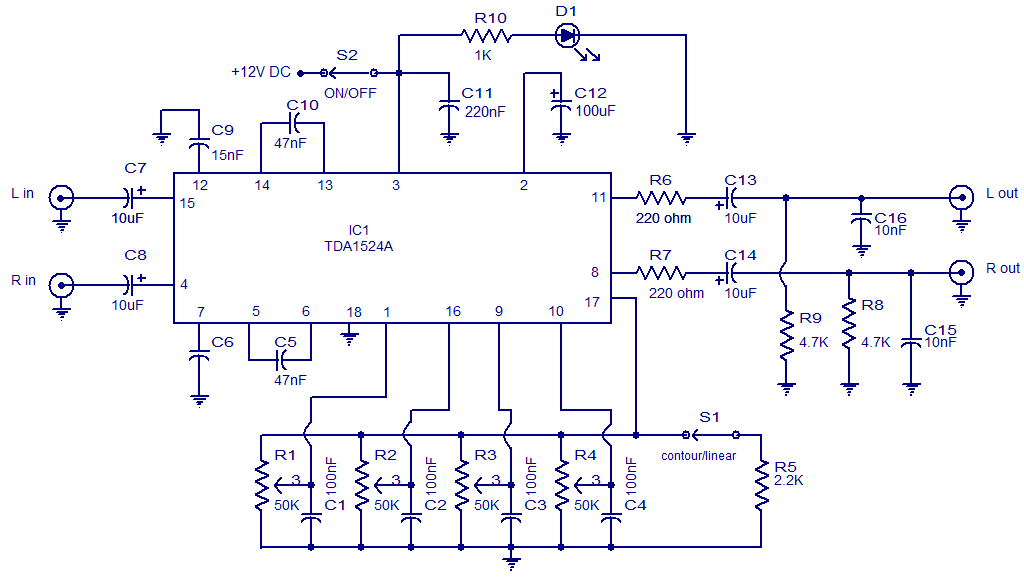
The following circuit illustrates the TDA1524 IC Stereo Preamplifier Circuit Diagram. Features include the ability to control volume, balance, and bass.
The TDA1524 is a highly integrated stereo preamplifier IC designed for audio applications. This circuit configuration allows for the manipulation of various audio parameters, including volume, balance, and bass levels, making it suitable for high-fidelity audio systems.
The TDA1524 operates with a dual power supply, typically ranging from ±9V to ±15V, ensuring sufficient headroom for audio signal processing. The IC incorporates multiple control pins that interface with external potentiometers or digital control systems, allowing users to adjust audio settings seamlessly.
The volume control is achieved through a variable resistor connected to the appropriate pin on the TDA1524, which adjusts the gain of the audio signal. The balance control is implemented using a similar variable resistor setup, enabling users to adjust the relative levels of the left and right audio channels. The bass control feature is typically realized through a low-frequency equalization circuit, which may include capacitors and resistors configured to shape the audio frequency response.
The output of the TDA1524 can be connected directly to power amplifiers or further processing stages in an audio system. Proper grounding and decoupling capacitors are essential to minimize noise and ensure stable operation. The circuit diagram should also include bypass capacitors close to the power supply pins of the TDA1524 to filter out high-frequency noise.
Overall, the TDA1524 stereo preamplifier circuit is an effective solution for enhancing audio quality and providing user-friendly control over sound characteristics in various audio applications.The following circuit shows about TDA1524 IC Stereo Preamplifier Circuit Diagram. Features: used for controlling the (volume, balance, bass and .. 🔗 External reference
The TDA1524 is a highly integrated stereo preamplifier IC designed for audio applications. This circuit configuration allows for the manipulation of various audio parameters, including volume, balance, and bass levels, making it suitable for high-fidelity audio systems.
The TDA1524 operates with a dual power supply, typically ranging from ±9V to ±15V, ensuring sufficient headroom for audio signal processing. The IC incorporates multiple control pins that interface with external potentiometers or digital control systems, allowing users to adjust audio settings seamlessly.
The volume control is achieved through a variable resistor connected to the appropriate pin on the TDA1524, which adjusts the gain of the audio signal. The balance control is implemented using a similar variable resistor setup, enabling users to adjust the relative levels of the left and right audio channels. The bass control feature is typically realized through a low-frequency equalization circuit, which may include capacitors and resistors configured to shape the audio frequency response.
The output of the TDA1524 can be connected directly to power amplifiers or further processing stages in an audio system. Proper grounding and decoupling capacitors are essential to minimize noise and ensure stable operation. The circuit diagram should also include bypass capacitors close to the power supply pins of the TDA1524 to filter out high-frequency noise.
Overall, the TDA1524 stereo preamplifier circuit is an effective solution for enhancing audio quality and providing user-friendly control over sound characteristics in various audio applications.The following circuit shows about TDA1524 IC Stereo Preamplifier Circuit Diagram. Features: used for controlling the (volume, balance, bass and .. 🔗 External reference
